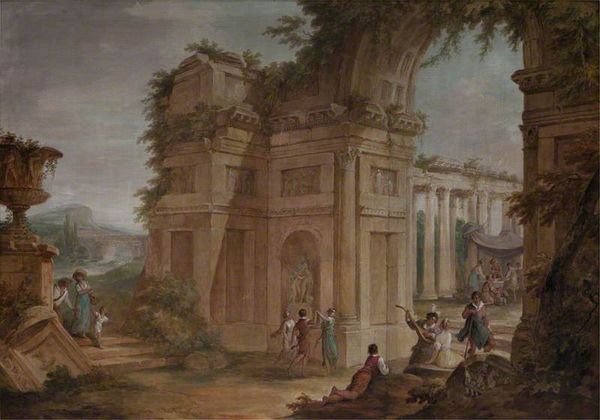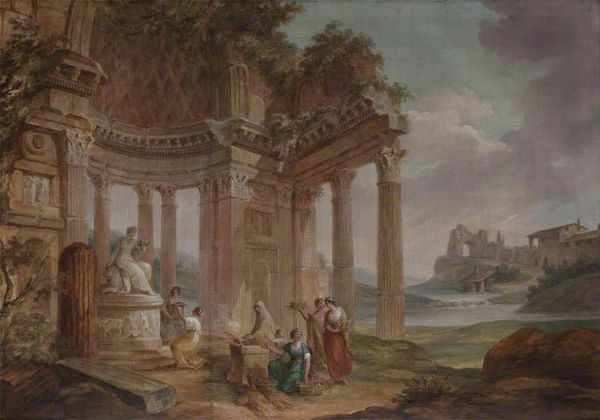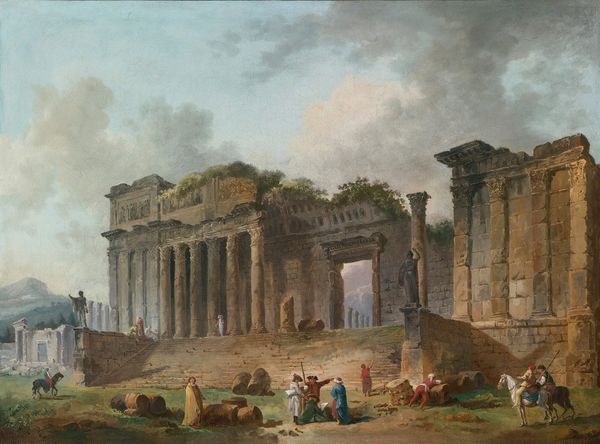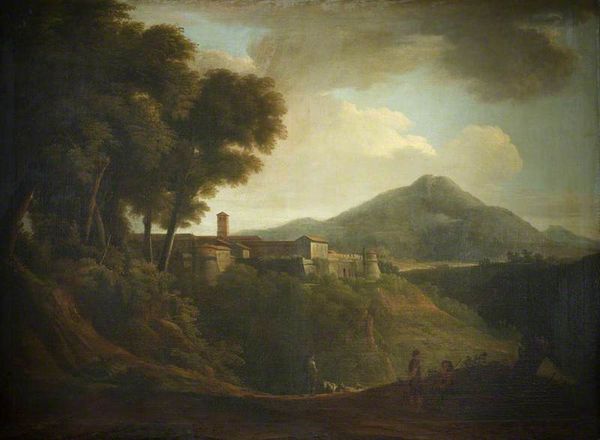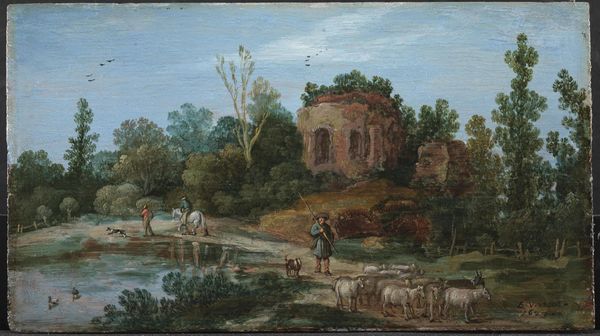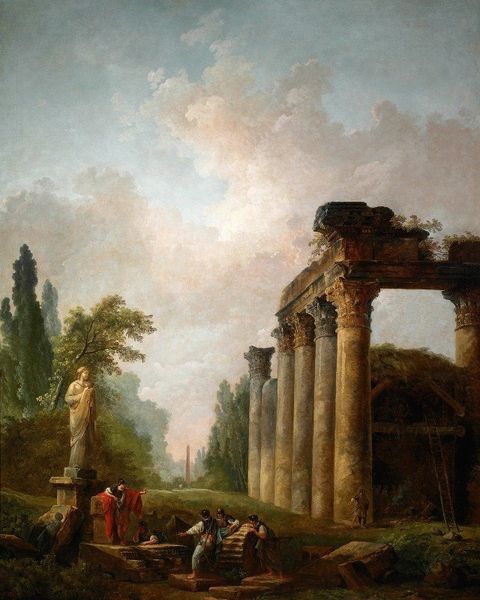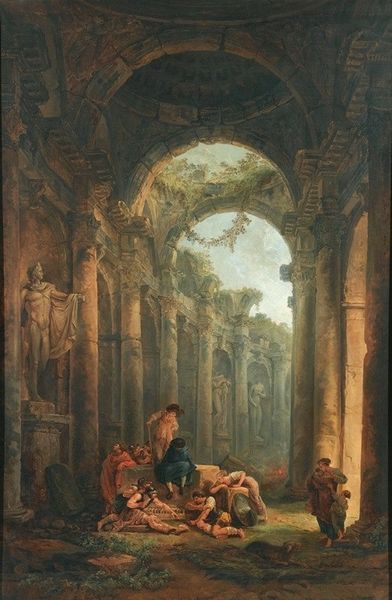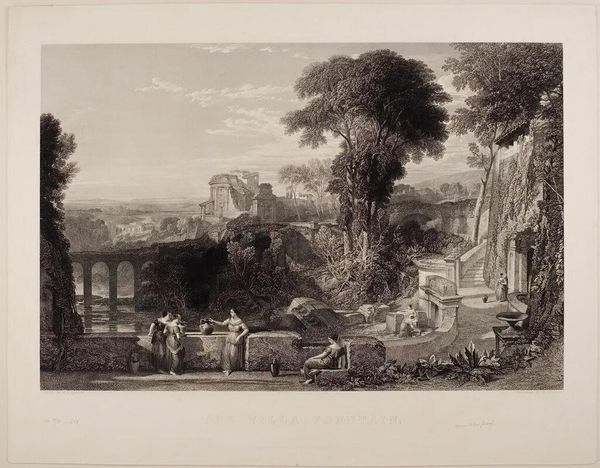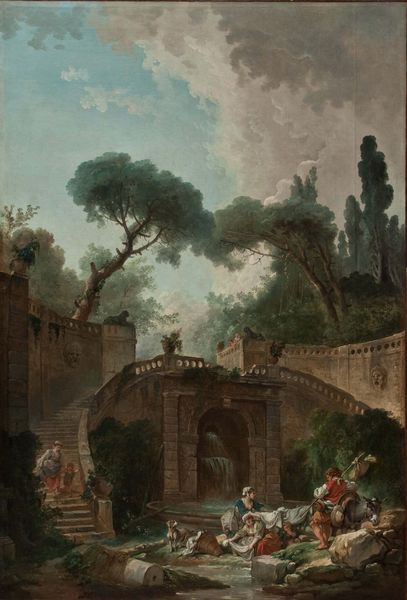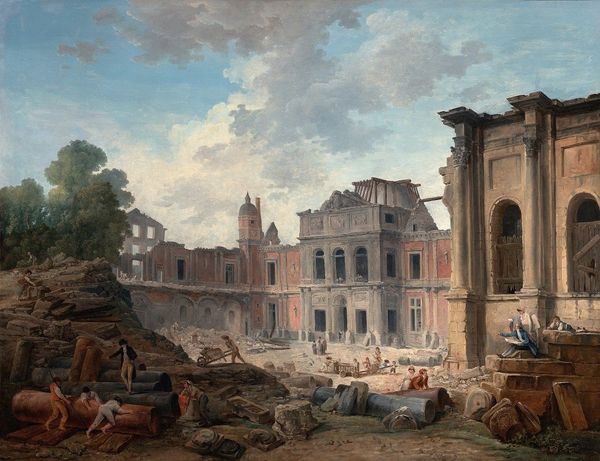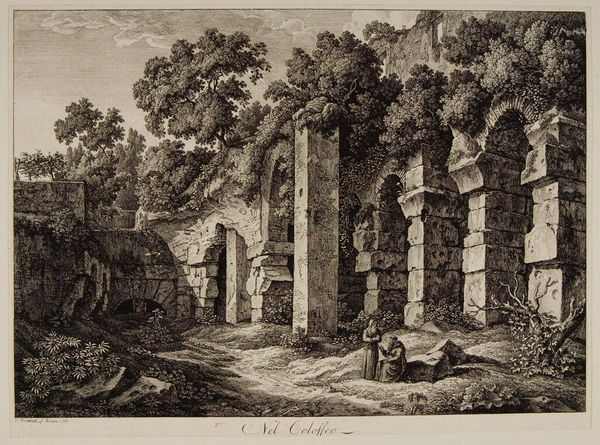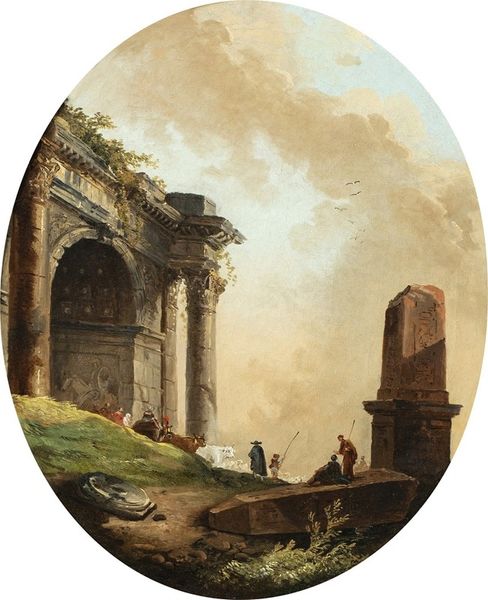
painting, oil-paint
#
painting
#
oil-paint
#
landscape
#
oil painting
#
classicism
#
history-painting
#
academic-art
Copyright: Public domain
Editor: William Hamilton's "Classical Ruins," painted in 1778 using oil paints, evokes a melancholic feeling. I'm curious about what drew Hamilton to depict these ruins and what meaning they held for the viewers of his time. How do you interpret this work? Curator: It's interesting to consider how these kinds of paintings participated in a specific visual rhetoric of nationhood and imperial ambition. How does viewing these images play into larger systems of power and privilege at the time? The picturesque aesthetic, combined with the trope of the noble savage amid Roman ruins, served very specific cultural purposes. Editor: So it's less about a straightforward depiction of ruins and more about using them to project a specific ideology? Is it perhaps creating an analogy between the glory of Rome and the British Empire at that time? Curator: Precisely. Consider who was consuming this art and the social institutions through which it was displayed and legitimized. Were the paintings merely aesthetically pleasing, or were they tools of soft power? Editor: That makes me rethink the seemingly romantic presentation. So by highlighting both the ruins and the contemporary figures within that ruin, it prompts reflection on how societies construct power. Curator: Exactly! The ruins, instead of being just romantic artifacts, stand as monuments of political and cultural narrative of the British Empire’s understanding of their place in history. What does the staging tell us about the role and influence of art? Editor: Seeing how this painting interacts with socio-political dynamics provides a fascinating perspective. I will certainly look differently at the visual propaganda produced today. Curator: Me too, reflecting on Hamilton’s Classical Ruins.
Comments
No comments
Be the first to comment and join the conversation on the ultimate creative platform.
